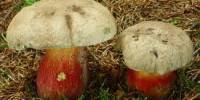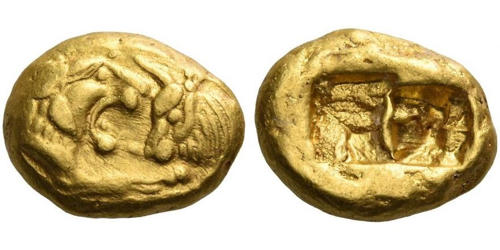REVIEW OF LETERATURE
Bangladesh rodent control campaign (1983) reported that rat damage in wheat was 4.44% in untreated field and 1.97% in treated field by ready-made baits and estimated that about 5,208 tons of wheat with a market value of US$859,000 was saved from rat by applying ready-made baits in one winter crop season.
Sarker et al. (1988) reported that Bandicota bengalensis consumed 24.83 gm of wheat per day, Rattus rattus consumed 9.28 gm of wheat per day and Mus musculus consumed 4.41 gm of wheat per day.
Poche et al. (1982) worked on Rodent Damage and Burrowing Characteristics in Bangladesh Wheat Fields. Rat damage to wheat was assessed in 303 fields (196 ha) in 4 districts of Bangladesh. In an appraisal of 315,000 wheat stems, only 0.5% were cut by rats before the booting growth stage. The country-wide rat-damage estimate in mature wheat was 12.1%, or 77,000 tons of grain destroyed before harvest. Wheat damage is attributable primarily to the lesser bandicoot rat (Bandicota bengalensis). Damage was highly correlated with stem density. Yield loss and percent rodent damage were also correlated. The average yield for 20 fields was 1,795.9 kg/ha. Seventeen percent of the damaged stems had only the panicle removed, whereas 83% were cut near ground level. Twenty lesser bandicoot rat burrow systems were excavated from the centers of wheat fields. The mean burrow length was 40.2 m, and storage chambers contained as much as 18 kg of cached wheat panicles. Rat damage was correlated with the number of active burrow systems within fields.
References and further reading may be available for this article. To view references and further reading you must purchase this article.
Grant et al. (2004) reported that rodent damage to rice can be measured at several stages of crop growth. In West Java, monocultures of lowland irrigated rice, cumulative damage to rice during the dry season was 54% at the primordial stage, 32% at the booting stage, but only 16% at the ripening stage. If measured at the ripening stage, the measured value ought to be multiplied by approximately 6.5 to obtain cumulative damage to the rice crop or by 4.2 for an estimate of yield loss. Rice yield can be estimated by farmers directly or by quadrat samples, the former being on average 20% lower than the actual yield. Integrated rodent management increased rice yields more when rats were common, in both dry and wet season crops. For every 1% increase in tiller damage by rats, there was a decrease of 58 kg/ha in rice yield. Wet season crops benefited more from a trap-barrier system (TBS) than dry season crops at the same rat abundance index. The benefit-to-cost ratio for all seasons and years averaged 25:1 but varied considerably from year to year between a low of −2:1 to a high of 63:1. The economic benefit of integrated rodent management was equal to or better than that achieved by conventional management based on synthetic rodenticides.
References and further reading may be available for this article. To view references and further reading you must purchase this article.
Patrick et al. (2001) reported that In 1989, a widespread outbreak of the multimammate rat—Mastomys natalensis (Smith, 1834) occurred in the Lindi Region in southern Tanzania. Population densities of the rodent were estimated in some areas to be over 1400 ratsha−1. Crop loss due to the outbreak was evaluated in the region. A total yield loss of 48% of maize, sorghum, paddy, and pulses that were in production during the 1989/90 crop season was attributed to seed depredation by the rats. The Tanzanian government spent about US$16,000 on a rodent-control campaign in this region. Food losses due to rodents required the government to supply relief food to residents threatened by famine.
References and further reading may be available for this article. To view references and further reading you must purchase this article.
Wood and Chung (1960) observed that systematic rat control was developed in oil palm plantations in the 1960s and 1970s by comparing bait mixtures and application techniques mainly for anticoagulant poisons, in trials with related ecological studies. Rattus tiomanicus populations of 100–600/ha were estimated in plantings of a range of ages and localities, and numbers fluctuated slowly within these limits in a single plot without control, monitored over 20 years. Optimum control was with maize based wax-bound baits (ca. 12 g), applied one per palm (generally 114–138/ha) with “replacement rounds” of those taken, at 4-day intervals until acceptance declined below 20% (usually about 5 or 6 rounds), doing large areas at 6-month intervals to minimise intermediate build up. Potential losses are estimated at 5–10% of the palm oil product, worth, within the wide price limits of recent years, from $(US)48 to 288/ha. Baiting cost is around $15/ha. Events since 1982 include appearance of warfarin resistant populations (but “second generation” anticoagulants remain effective); the replacement of the formerly ubiquitous and virtually sole rat of mature oil palms, R. tiomanicus, by R. rattus diardii, in several localities; and some populations displaying non-acceptance of baits. Heavy losses can be caused in rice by R. argentiventer. It cuts down growing stalks (the biggest cause of losses) and eats developing grain. The replacement round technique is effective. Loss sustained depends on site-suitability for burrowing, shelter, and alternate food. These are related primarily to size of “bunds” (earthbanks separating individual paddies) and area of interspersed non-paddy land. A median gain of ca. 1.8 t/ha was found in trials in a range of localities, presently worth about $(US)250 (farmgate), against bait cost of about $2. Sugar cane can be attacked, and in a pilot project in Malaysia, R. exulans caused heavy losses. Replacement round baiting has seemed effective where tried. Owls take rats in cocoa, but there are no reports of their potential in practical control being tested in that or any of these other crops.
References and further reading may be available for this article. To view references and further reading you must purchase this article.
Advani and Mathur (1981) noted that the relationship between rodent control, decline in damage and resultant increase in production in twelve vegetable crops was studied in fields (2000 ha) in eight villages near Jodhpur. The rodent damage to various vegetable crops ranged from 4.1–19.9%, the average being 8.7%. A reduction of 92.5% of the rodent population corresponded with a 91.9% reduction in damage. On average, this increased the production of vegetable crops to 11.7 quintals (q) ha−1 (7% ha−1). The cost benefit ratio was 1:900. The paper also discusses the migration of rodents to crop fields from surrounding non-agricultural land and vice versa and replacement of rodent species after control operations.
References and further reading may be available for this article. To view references and further reading you must purchase this article.
Saunders and Robards (1982) reported that during a localized plague of the house mouse (Mus musculus) the population within an irrigated sunflower crop was estimated to be 2716 mice/ha 7 weeks before harvest. These mice were estimated to have caused a reduction of 12·4% of the expected yield up to that time. The crop was then subjected to a variety of control techniques, the most successful of which resulted in a reduction of 90% in the mouse population. Using 3·4 g/day as the amount of sunflower seed each mouse would consume or damage it was estimated that a 90% effective control programme would result in an increase of 20·4% in the harvested yield. Similar estimates for other irrigated grain crops indicate that mouse-plague control is an economically sound proposition.
Peter et al. (1960) observed that the efficacy and cost-effectiveness of strychnine baiting was tested at sowing in May–June 1994 in two cereal-grain-growing regions of Victoria, when numbers of house mice (Mus domesticus) were high (up to 1000 mice ha-1 in the Mallee) and moderate (100–250 mice ha-1 in the Wimmera). In each region, there were four replicates of baited and unbaited sites. Strychnine was applied once by ground spreaders to 40% of each stubble paddock and to all fencelines at each treated site. Treatments did not significantly affect the demographics (size cohorts, breeding status or sex ratio) or abundance indices of mouse populations. The most pronounced reduction occurred in stubble paddocks (harvested five months earlier) in the Mallee region, where there was a 57% reduction in mean mouse density two days after baiting. This difference was not significant because of high variation between sites within treatments. Moreover, three weeks later the mean density of mice in treated stubble paddocks was approximately double that in the untreated sites.
References and further reading may be available for this article. To view references and further reading you must purchase this article.
Jakel et al. (2005) reported that replicated large-scale field trials in two seasons in Thailand with the protozoan parasite Sarcocystis singaporensis showed that damage due to rats was reduced significantly. Biological as well as conventional (local practice using electric fences and zinc phosphide) rodent control reduced the mean proportion of rat-cut tillers in the first (biological 0.5%; conventional 1.6% and 1.1%) and second season (biological 0.2%; conventional 0.6%) compared with untreated controls (5.8% and 5.5%, respectively). At sites that received rodent control in the first season, activity of rats (Rattus argentiventer, R. losea, Bandicota indica) declined towards harvest. Biological as well as conventional rodent control resulted in yield increases of 18% and 20%, respectively, although in the second season weed problems confounded yield data. Economic analysis showed that biological rodent control was more economic than conventional control at an average damage level of 5%, whereby yield increases of 2–3% paid back the costs.
References and further reading may be available for this article. To view references and further reading you must purchase this article.
Watkins et al. (1995) reported that two non-lethal vertebrate feeding deterrents, cinnamamide and 3,5-dimethoxycinnamic acid, were tested as seed dressings for the protection of winter wheat against damage by the field slug, Deroceras reticulatum. Both compounds were active in deterring feeding in a two-choice test. Cinnamamide was the most effective repellent, significantly reducing the damage sustained by the wheat seeds over the course of the 7 day trial. In a no-choice test, 3,5-dimethoxycinnamic acid (0.6% w/w) failed, but cinnamamide (0.54% w/w) continued to provide significant protection of the seeds for the duration of the trial. A subsequent 1-day, no-choice test demonstrated that cinnamamide could significantly reduce seed damage at concentrations as low as 0.23% w/w and at concentrations of 0.54% w/w provided complete protection of the seed. Coating of wheat seeds with cinnamamide did not significantly affect the viability of the wheat seeds. Our results indicate that cinnamamide has the potential to protect a range of agricultural and horticultural plants from slug damage in a manner that is both effective and environmentally acceptable.
Poche et al. (1981) reported that The effects of simulated rat damage (stem cutting) on IR-8 rice yield was examined. Fields were subjected to four damage levels: 0 (control), 10, 25 and 50% of the stems cut. A modified split-plot sampling design was used with ten 1 m2 plots tested at each damage level in three growth stages: tillering, booting and maturity. Each of the 120 plots (2,400 hills) was harvested and yields compared by Analysis of Variance and Least Significant Difference (LSD) tests. Ten perpent of all stems removed during the tillering stage produced growth compensation and a higher yield resulted. Trends in rice yields for different damage levels showed that the later damage occurred, the greater the yield loss. An LSD analysis of yields for the damage levels revealed no significant differences during tillering. At booting, significant differences (P < 0.05) in yields were noted with > 10% of the stems cut. At maturity, yields for all damaged levels differed significantly (P < 0.01). The results of this study demonstrated that rat damage in rice up to the booting stage did not affect yield significantly. From an economic standpoint, rodent control by field baiting before booting stage is not recommended in monsoon rice.
Salvionim (1988) worked on that rodent damage to crops in developing countries. In Madagascar the most important rodent pest is the roof rat (Rattus rattus). The impact of the rat on rice crops was studied in the region of Lake Alaotra, the principal rice-producing region of Madagascar. Evaluation of rodent damage was conducted in 591 parcels just before harvesting. The average damage value was low (on average less than 1%) and the average losses per hectare were also low at less than 100 kg paddy rice/ha. Differences were significant, depending on the locality and the presence of good refuge habitat for rats around the ricefield. The rice variety and agronomic practices did not influence the damage levels. The low damage level does not require the use of rodenticide in a rat control programme.
Mian et al. (1942) studied on nine seasonal islands in a deep-water rice zone at Agrokhola. Three islands served as reference, three were intensively trapped and the remaining three were baited. In the decreasing order of abundance the five species trapped from May to December, 1979, were Rattus rattus, Bandicota bengalensis, Mus musculus, Millardia meltada, B. indica. Rodent population increased on the islands during the month of June and July due to rain and flooding in the fields. R. rattus was the dominant species due to migration of this species from the surrounding fields. From September they began immigrating back to the fields. Most of the rodents were captured inside houses. B. bengalensis appeared to be relatively more feral than R. rattus and M. musculus. Population reduction by intensive trapping was 90.0% after six months of trapping, while on baited islands, population reduction was 100% after only four months of baiting. Baiting with rodenticides appears to be more effective in reducing rodent populations on the islands.
Pradhan (1980) reported that during the thirteen years after the inclusion of ten suburbs, and the urbsnisation of the western side of Greater Bombay a systematic rat survey, similar to those done earlier in the different wards of the city had not been carried out. “P” ward comprising Goregaon and Malad has been selected for the present work. The paper deals with ecological studies of the genus Bandicota and also with the effects of the variety of ecological factors on their incidence, sex ratio and breeding seasons. B. bengalensis prefer an urban atmosphere whereas B. indica prefers a rural one B. gigantea seems to prefer wild life only. Females predominated in the trapped populations of rodents. There were more fluctuations in sex ratio in rural atmosphere than those in the urban surroundings. The two breeding peaks for the field rats of “P” ward, calculated after studying sex ratio, pregnancy and immature curves, are monsoon and late winter (January – March).
References and further reading may be available for this article. To view references and further reading you must purchase this article.
Mian et al. (1986) worked on small-mammal activity indices were obtained with inked tracking tiles before and after 3 nights of removal trapping in farmers’ households in Bangladesh. This procedure was followed for 12 months, using 12 different households during each monthly cycle. From the change in proportion of positive tracking tiles before and after trapping, and the number of animals removed, it was possible to estimate the pretrapping population of small mammals: house mice (Mus musculus) constituted 53% of total captures, and the Asiatic house shrew (Suncus murinus) accounted for 34%; of lesser importance were bandicoot rats (Bandicota bengalensis) and roof rats (Rattus rattus). The estimated small-mammal population varied from 170 in December 1982 to 40 and 34 in March and August 1983, respectively. The rodent population estimated in the farmers’ households averaged 8·3 mice and 2·0 rats per household. These rodents were estimated to consume and hoard about 53 kg of rice per farm family per year. Because tracking tiles and traps were placed only on the floors of the structures, data collected on rodent activity and trap captures underestimated the small-mammal populations; consequently, stored food loss estimates represent a minimum per year.
Peter et al. (2006) reported thatdeveloping a relationship between pest abundance and damage to crops is essential for the calculation of economic injury levels (EIL) leading to informed management decisions. The crop modelling framework, APSIM, was used to simulate the impact of mouse damage on yield loss on wheat where a long-term dataset on the density of mice was available (1983–2003). The model was calibrated using results from field trials where wheat plants were hand clipped to imitate mouse damage. The grazing effect of mice was estimated using the population density, daily intake per mouse and the proportion of wheat grain and plant tissue in the diet to determine yield loss. The mean yield loss caused by mice was 12.4% (±5.4S.E.; range −0.5 to 96%). There were 7/21 years when yield loss was >5%. A damage/abundance relationship was constructed and a sigmoidal curve explained 97% of variation when accounting for different trajectories of mouse densities from sowing to harvest. The majority of damage occurred around emergence of the crop when mouse densities were >100 mice ha−1.
References and further reading may be available for this article. To view references and further reading you must purchase this article.
References and further reading may be available for this article. To view references and further reading you must purchase this article.
Brown et al. (2002) noted that plagues of house mice (Mus domesticus) can cause severe economic damage to grain crops in southern Australia when their populations peak at sowing of winter-growing crops in autumn. Mice damage crops by locating and digging out newly sown seeds. If damage is high, farmers have to re-sow their crop. A trial was conducted to examine the effect of increasing sowing depth of winter cereal (short and long coleoptile wheat), lupin and field peas and whether the addition of a repellent reduced the amount of seed damaged by mice. Crops were sown at 30, 50 and 70 mm and the germination rate and number of mouse diggings was compared in an open field and a mouse-proof exclosure (fenced site). Omethoate was tested as a repellent for crops sown at 30 mm depth. The population density of mice was 60 mice/ha at sowing and increased to 300 mice/ha 4 weeks after sowing, then declined to <5 mice/ha 4 months after sowing. There was a significant difference in the emergence rate of the crops, but no difference in the emergence rate of plants sown at different depths or with the repellent. The effective loss at emergence on the open field compared to the fenced site was 10–18% for wheat, −1% for lupins and 7% for field peas. There were more mouse diggings along drill lines evident in wheat and field pea crops sown at shallow depths.
References and further reading may be available for this article. To view references and further reading you must purchase this article.
peter et al. (2003) reported that house mice, Mus domesticus, cause significant damage to wheat crops in Australia by digging up and eating newly planted seeds, or by cutting stems and eating developing grain. This study was conducted to determine how wheat compensates for damage by physically cutting tillers to simulate mouse damage. Tillers were cut at five intensities: 0%, 5%, 10%, 25% and 50% at each growth stage of emergence, tillering, booting and ripening. There were five replicates of each treatment plus an experimental control. The later the damage occurred, the greater the yield loss. Significant reductions in yield occurred for 50% intensity of damage that occurred at the booting stage (34.4% reduction in yield), and for 25% and 50% intensity for damage that occurred at the ripening stage (29.3% and 54.7% reduction in yield, respectively). There was a significant difference in the average weight of grain per tiller between stage of crop damage, but no difference for intensity of damage or interactions. The yield per tiller was greater for the tillering stage (1.50 g/tiller±0.04 standard error (SE)) compared to the experimental control sites (1.18 g/tiller±0.08 SE). This study demonstrated that wheat crops can compensate for simulated damage by increasing grain production and increasing the number of tillers or survival rate of tillers remaining after damage was imposed. These findings have important consequences for managing potential impacts of mice on wheat crops in Australia. There was little yield loss for up to 50% intensity of damage at emergence. This suggests that mouse control is required only when high levels of damage are likely to occur after the tillering stage. However, even a 3.4% reduction in yield as found for the 50% intensity at emergence would result in a US$18 ha−1 loss.
Russel et al. (2003) studied on the sustainable management of small mammals. Little is known about what proportions of females need to be sterilized to achieve an impact on population size and what compensatory processes may act on the population level. We tested the impact of surgical sterilization of zero, 25, 50, and 75% of females on the population dynamics and demography of enclosed populations of ricefield rats (Rattus argentiventer) and damage to rice crop. Sterilizing 50% of female founders (6 of 12) decreased population size at the end of the breeding season by about 50%. We used a simulation model, based on the breeding biology of the ricefield rat in the field and in the control enclosures, to generate the expected dynamics of the enclosure populations. The results suggested that compensation occurred in the enclosures where 75% of female founders (9 of 12) had been sterilized. We detected a slight tendency for 50% higher numbers of recent uterine scars in fertile founder females in the 50% and 75% treatments versus 25% treatments and controls (P = 0.198). The primary demographic mechanism for compensation was higher survival of young rats in enclosures where 75% of females were sterilized. However, compensation only partially offset the decrease in population size. We found no conclusive evidence that the reproductive output of F1 generation females was higher when large proportions of female founders were sterilized. Early in the breeding season, the per capita damage to rice plants in populations without sterilized ricefield rats was increased. Our results suggest that the sterilization of >50% of females in ricefield rat populations can reduce rat population growth and rat damage to rice crops.
















